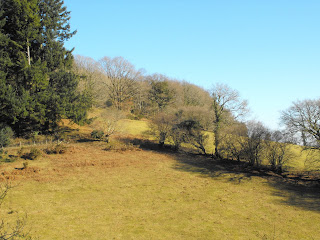
When my mum had jobs that needed doing but she didn't enjoy, she always called it drudgery. A word not often used these days, though it did cross my mind recently when I put my nose to the grindstone and got on with the - truly horrid - job of scrubbing the oven from top to bottom, and boy, did it need it as some jam had boiled out of a roly-poly and bubbled all over the oven bottom until it was pure carbon!
Today I have been reading bits from "Not in Front of the Servants" (A true portrait of Upstairs, Downstairs Life) by Frank Victor Dawes and an excellent book. Believe me, the poor girls mentioned in there knew ALL about drudgery.
They had very little choice, of course, in those days of poverty and large families. As soon as the eldest girl was old enough, she was out into service, and proud to go and help her family by sending home the pittance she earned and by being one less mouth for her family to feed. In the mid-Victorian period 10 years was considered a suitable age. The book tells of one poor child who was in service in a large house at Harrogate in Yorkshire. Up at 4 a.m., she was expected to set to and scrub the stone floors in the dairy, on her hands and knees with a bucket of cold water and just a candle for light. Having done that, she then had to churn the butter until her arms felt like they were dropping off. She would scarcely see the light of day as she skivvied (another word my mother used) in the kitchen and scullery, black-leading the grates, setting and lighting fires, polishing floors and being at the beck and call of all the other servants until finally she was allowed to drag herself upstairs to her attic bedroom, again lit by candlelight, at 9 p.m. I should imagine she slept like the dead each night.
If the placement was local, the maids in service were sometimes able to send some leftovers home, as Harriet Brown, working in Edgeware in 1870, wrote to her mother:
"I have saved a small piece of plum pudding for you and will save some mince pies and I thought you would like a little dripping so I have sent all."Bread and dripping - a favourite of my mum's especially when we had had a small piece of beef to roast on a Sunday. I never joined her in this delicacy!
Harriet's daughter didn't fare as well in her placement 20 years later where she was the lowest of 8 housemaids. She
"slaved from 5 a.m. until late at night at all the roughest work. She had to scrub at the bare boarded floors of the staff rooms with a mixture of soft soap and silver sand until her hands, and arms up to her elbows were red raw. On most nights she cried herself to sleep." Of course, the staff got full board although at times they might have been better off at home. One poor girl who worked in a chemist's home, had a frugal diet: Breakfast: Four slices of bread and dripping, two cups of tea. Dinner: quite a good two-course dinner; Tea: small pot of tea, three slices of bread and margarine. This was 1914.
A 1900s lady's maid remembered that the food was not plentiful and was rather repetitive, with boiled bacon one morning and fried the next, but NEVER an egg in all the time she worked there. Sundays had tastier fare with sausages or bloaters being on offer. However, the Sunday roasting joint for above stairs was expected to be used up the rest of the week on the servants' table, in various guises until it became a sort of hash which no-one fancied. Bread, butter and home-made jam (gooseberry one week and plum the next) were served for tea. Occasionally they had treats left over from dinner parties and these were swiftly demolished!
In large houses there was a very strict serving order, with the tweeny last, poor lass. The better establishments fed their staff very well with none of the "this'll do for them" and bread and margerine and leftovers. Instead, the servants would have their own menu and country houses would always have an abundance of fresh vegetables and game, though one wonders what the servants thought of game hung until it was high and wriggling with maggots, and ripe cheese crawling with mites . . .
Anyway, no drudgery for me today, although I did push myself hard tidying up out in the garden, and did my baking at the wrong end of the day (after breakfast is best, when I have energy).
Today's A.R.O.S.:
Harbingers of spring, the snowdrops peek through the soil, and the catkins waggle golden lambstails.
















































